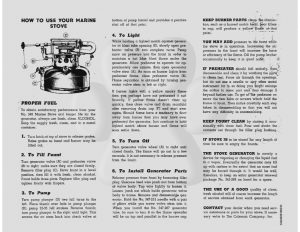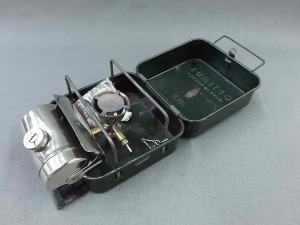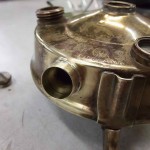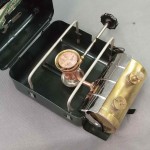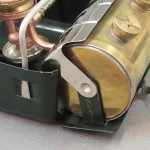Hi BernieDawg
I have a Gerry and a Hank Roberts mini-stove and I want to adapt them to use todays fuel canisters. Do you have and sell a conversion kit or can you refer me to someone who does? Should you have one, how can I order it and how much does it cost? Thanks for your help.
Signed,
Gerry Guy
Hi Gerry Guy
Thanks for your question. I’m going to tell you the honest truth. It may not be what you want to hear. I hope you won’t be mad.
As you know, the cartridge style used for Hank Roberts, Gerry and similar stoves has been out of production for many years now. The Hank Roberts and Gerry branded stoves have gone the way of 8-track tape players, Sony Betamax VCRs, and crystal radio sets – they are outmoded and obsolete, having been replaced by much better modern alternatives. On the other hand, I do understand that some people enjoy collecting these old dinosaurs. Heck, I have a few of them myself!
I did a small run of custom-machined adapters for Hank Roberts conversions back in 2010 for some fans of this budget-priced stove of yore. I no longer have any in stock. The machined brass adapter connects the Hank Roberts/Gerry 7/16 x 20 stove thread to the Chinese M6 x 0.75 threaded hose/valve set.


If you’d like me to custom-machine a brass adapter on my precision mini-lathe it’d cost you $45 plus shipping (about $3 in the USA). You can buy the Chinese-made valve/hose set shown in the photo for about $12 on eBay. If you think I’m out of line on the cost of that custom machining, you can give the thread data and show the photos above to your local machinist and see what he’d quote you.
There is no one anywhere else in the world that I know of that does any sort of conversions for these. So, there is no need to knock yourself out searching the web further.
All this said… most people (including me!) don’t think converting a Hank Roberts/Gerry is worth it. You can get most modern brand name isobutane stoves new at under $50-60. That’s what I would encourage you to do. Why? Well…
Modern lightweight backpacking stoves are designed to specifically burn the gas mixtures in present day isobutane cartridges. Hank Roberts and Gerrys, on the other hand, were designed to burn straight butane. Isobutane works much better in cold conditions and comes in canisters you can find all over. The Hank Roberts/Gerrys simply aren’t designed or jetted to work as well as a modern stove with isobutane canisters. They are cute “collector item” stoves, but they are not serious outdoor stoves compared to modern alternatives. (Sorry if this isn’t what you wanted to hear.)
Here are a few name brand modern stove candidates you can Google that would make good replacements for your Hank Roberts/Gerrys:
Snow Peak Gig, manual – $39.95 msrp
MSR Pocket Rocket – $39.95 msrp
MSR Micro Rocket – $59.95 msrp
Kovea Tornado – about $41 with shipping via eBay
Optimus Crux – $59.95 msrp
Optimus Crux Lite – $39.95 msrp
Primus Classic Trail – $25 msrp
And… if you are looking for even cheaper, but still usable stove alternatives, there are many, many imported isobutane stoves coming out of China and Korea that are really quite good. You can find them on sale on eBay for under $20 with the shipping included in that price. Here are three I’ve purchased that I found work just fine and all for under $20 shipped:



You can curb recycle your old Hank Roberts/Gerry stoves as aluminum in many communities in the USA. Or, you can try to sell it on eBay, though most people have figured out they are pretty much useless now that cartridges for them have been gone for 10+ years. Or, you can make a nice display of vintage backpacking gear in your home to remember those great old times on the trail. (I still have my old 1977 Kelty frame pack hanging on my wall!)
Happy Camping!
BernieDawg















